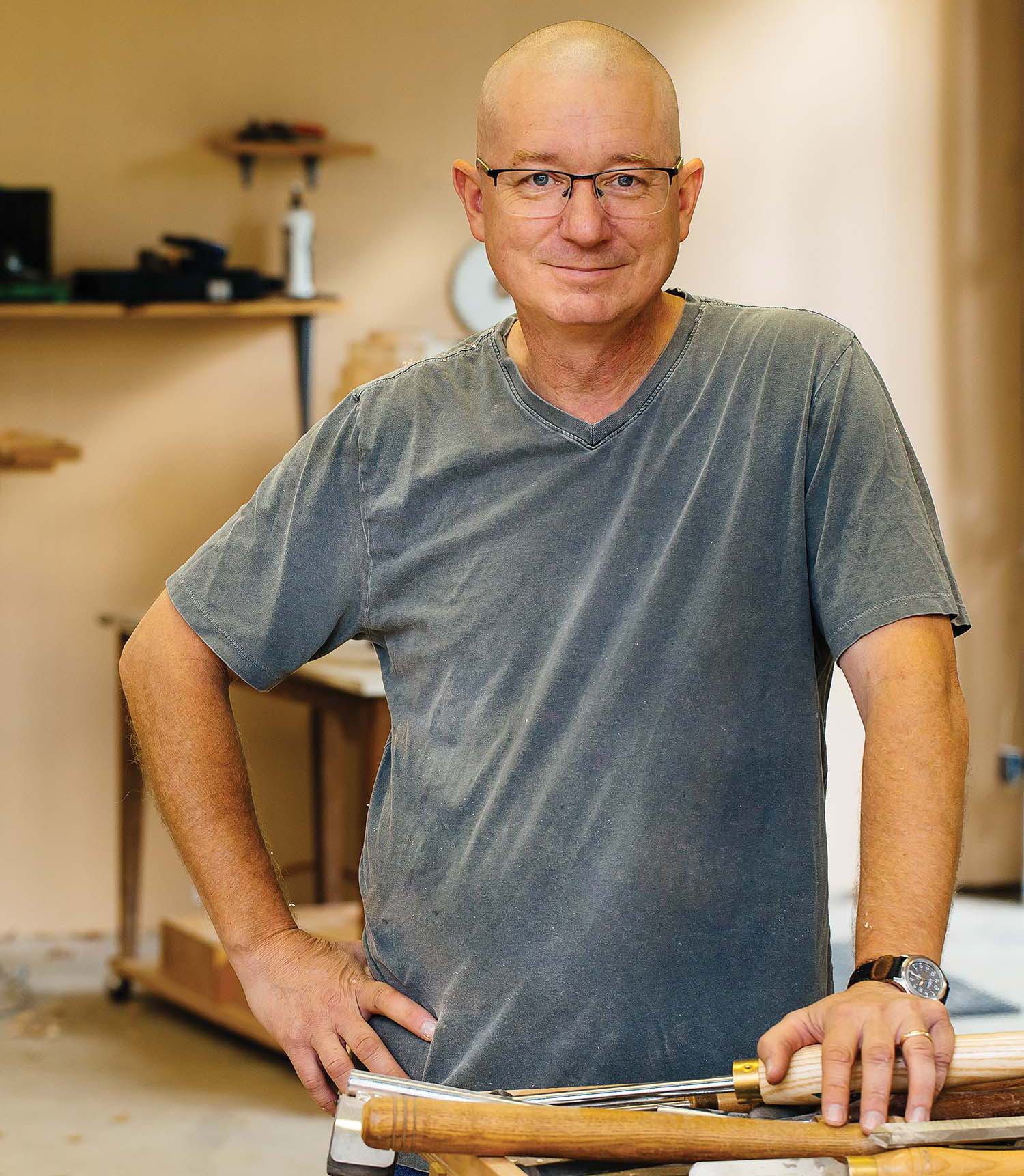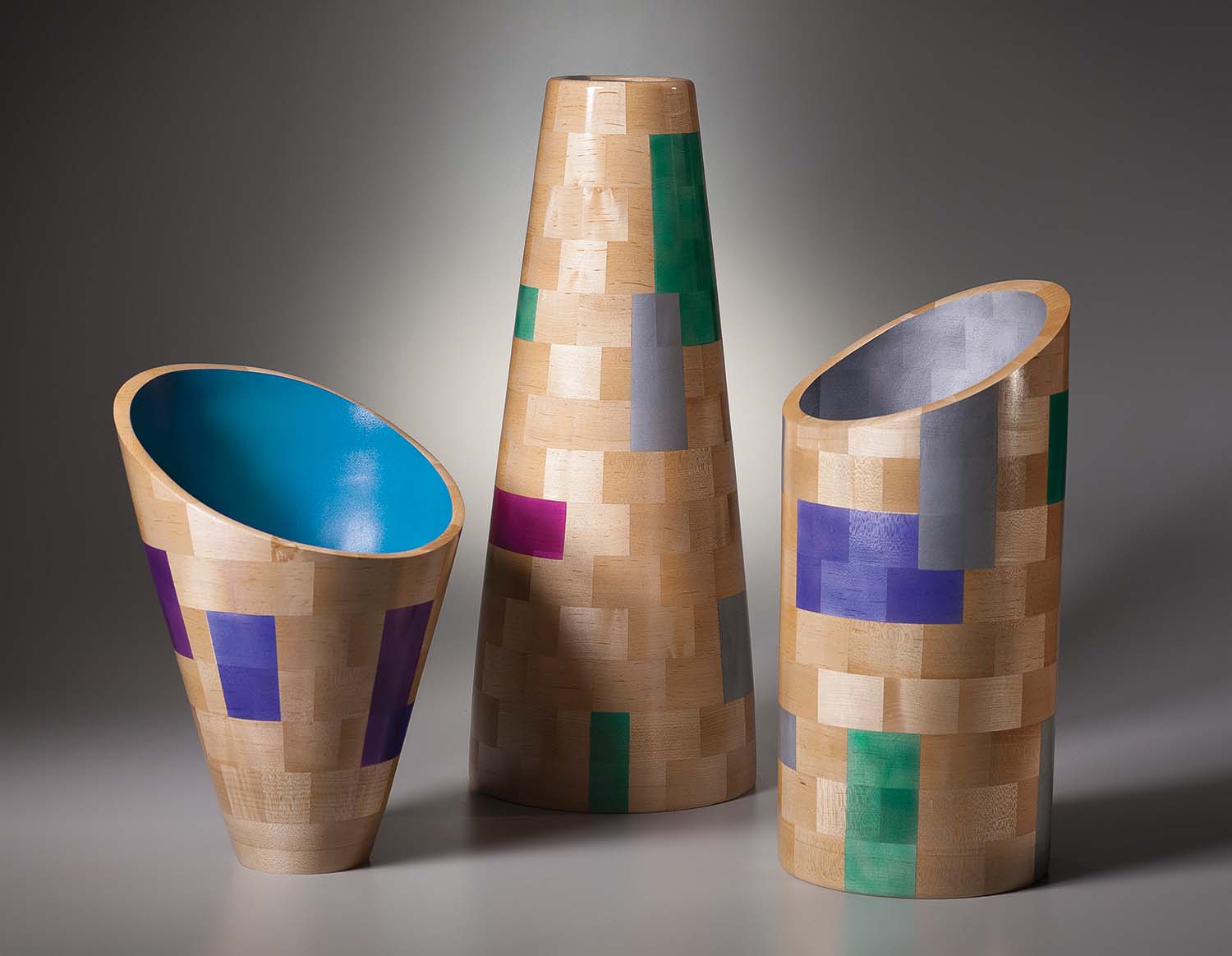
When Joel Hunnicutt encountered a wood lathe more than 20 years ago, it was love at first touch. He’d decided to take a community-college class on furniture making, but the whir of the machine and the shapes it could coax from the wood opened a world of possibility beyond carpentry. It established a connection that’s led to a body of remarkable wood-turned vessels: inspired by classical forms, they glow with the delicate appearance of glass.
Hunnicutt’s talent has no precedent in his personal history growing up in Columbia, South Carolina. “I’m a first-generation craftsperson,” he says. “I have no idea where it came from.”
However, he concedes, “early in my working career, I was an apparel buyer for a major Southeastern department store, and I think that experience gave me a feel for form and color.” Both of those attributes combine gracefully in Hunnicutt’s pieces, found in private collections and in commissioned work for public spaces as far away as Asia and the Indian Ocean. His installation for a hotel in Ankara, Turkey — Hunnicutt places it among the most difficult pieces he’s created — comprised a quartet of six-foot-tall forms inspired by classic Greek amphorae, each one composed of scores of separately machined pieces of wood.
“The sheer size of the pieces was far more difficult than I anticipated,” Hunnicutt recalls. “I turned them suspended between two lathes.” Even larger were a set of six pieces, some of them seven feet tall, for a commissioned project in the Maldive Islands.

Despite the reference to traditional pottery forms, Hunnicutt admits he’s never thrown a clay pot, joking that even the feel of wet clay under his fingernails is displeasing. For him, it’s the forms themselves that are the attraction. “It’s truly amazing how these forms appear in all cultures and through all periods of history,” he says. “I read somewhere years ago that the Greeks had created all of the great forms, [but] that they copied them from the Chinese.” Drawing on his research, Hunnicutt conceives each new piece wholly formed in his imagination before turning to a series of sketches to refine the shape and plan its components. “In building the pieces,” he explains, “I cut many small pieces to really precise dimensions, and then hand-glue each one of them together to create a rough outline of the finished shape.” Dozens of these small cut pieces may have to be made before the construction begins, followed by more delicate shaping once the rough shape is achieved.
Hunnicutt’s trademark iridescent glazes are derived from colors that he mixes himself and applies in layers between coats of clear lacquer. “The effect is much like a gel on a light in the theater,” he says. Some of the sculptures are multi-colored on their exterior surface with a solid color lining the interior; others bear patches of color that allow the natural wood beneath to emerge between them.

As a viewer steps around a work, the colors seem to shift slightly as they reflect light from different perspectives. Both color and form conspire to evoke a sense of timelessness and tranquility in each piece — a reflection of the concentration required to produce them. “I like working in a quiet environment,” Hunnicutt says. “Like most artists, I really get inside myself when I’m working. My focus area gets really small, and I’m really thinking about every element.”
After living in eastern North Carolina for decades, Hunnicutt moved to the mountains this past spring; from his home in Hendersonville, he is closer to Ariel, the cooperative gallery he’s owned with nine other artists since 2011. His work appears in other galleries stretching westward to California, including exhibitions this fall in St. Louis and Kansas City. Meanwhile, commissions continue to emerge from Europe and Asia — a long way from that first idea of furniture making two decades ago. “As soon as I turned the pedestal for the table I was creating, I was hooked,” Hunnicutt remembers. “I instinctively knew what to do. It felt right.”
Joel Hunnicutt’s wood-turned creations are on display at Ariel Contemporary Craft Gallery (19 Biltmore Ave., Asheville). 828-236-2660. Also see joelhunnicutt.com.

Great article about Ariel’s Joel Hunnicutt and his colorful, sculptural work.